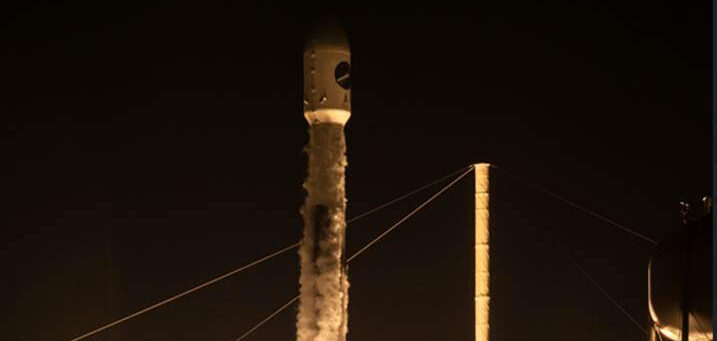EL SEGUNDO, Calif. – U.S. Space Force’s National Security Space Launch (NSSL) program and SpaceX’s Falcon 9 rocket launched the USSF-36 mission into orbit Aug. 21 from historic Launch Complex (LC)-39A at NASA’s Kennedy Space Center, Florida.
The mission, carrying the U.S. Air Force X-37B Orbital Test Vehicle (OTV) spacecraft, lifted off on schedule at 11:50 p.m. EST (8:50 p.m. PST). USSF-36 was ordered under the NSSL Phase 2 contract, Task Order No. 2, on March 8, 2021.
“This was our fourth NSSL Phase 2 mission so far this year, and we have more coming right behind it,” said Col. Ryan Hiserote, senior materiel leader, Launch Execution for Space Systems Command Assured Access to Space organization. “In fact, we have more missions queued for launch over the next 12 months than in any prior 12-month period in the history of the NSSL program…and we welcome this challenge. Putting innovative capabilities such as these in orbit builds United States strength in the space domain and increases our nation’s overall warfighting capability.”
This is the third NSSL Falcon 9 mission this year, the first being National Reconnaissance Office Launch (NROL)-69 in March followed by the rapid response Global Positioning Systems (GPS) III-7 SV-08 in May. Looking ahead to an increased launch cadence, the government team and SpaceX continue to sharpen their technical assessments together, enabling shorter timelines that enable a higher launch rate without compromising mission success.
“Our One Falcon Team did a superb job executing our independent mission assurance responsibilities faster, at the same level of confidence, and in parallel with preparations for our next mission,” said Dr. Walt Lauderdale, chief of Falcon Systems and Operations, and mission director for the USSF-36 launch. “Our excellent relationship with our launch service provider and our deep understanding of this launch system make us more efficient and the result will be the throughput required to satisfy growing national needs.”
Assured Access to Space executes the U.S. Space Force’s core function of Space Access, performing the space lift and range control missions. Additionally, it operates and sustains resilient and ready launch and test infrastructure to expand U.S. economic, technological, and scientific leadership. Further, AATS delivers servicing, mobility, and logistics capabilities that operate in, from, and to the space domain.
Space Systems Command is the U.S. Space Force field command responsible for acquiring, developing, and delivering resilient capabilities to outpace emerging threats and protect our Nation’s strategic advantage in, from, and to space. SSC manages a $15.6 billion annual space acquisition budget for the Department of Defense, working with joint forces, industry partners, government agencies, academia, and allied nations. For more information, visit ssc.spaceforce.mil and follow @USSF-SSC on LinkedIn.

